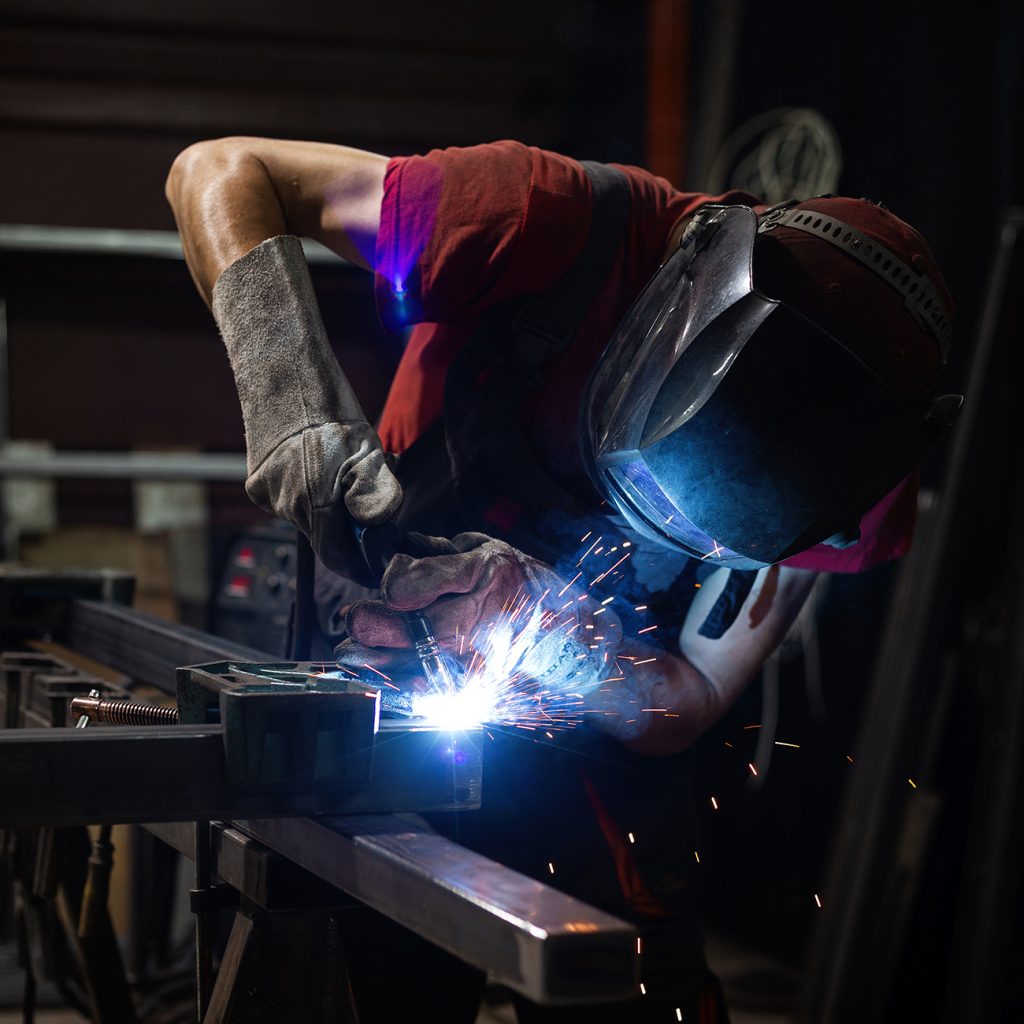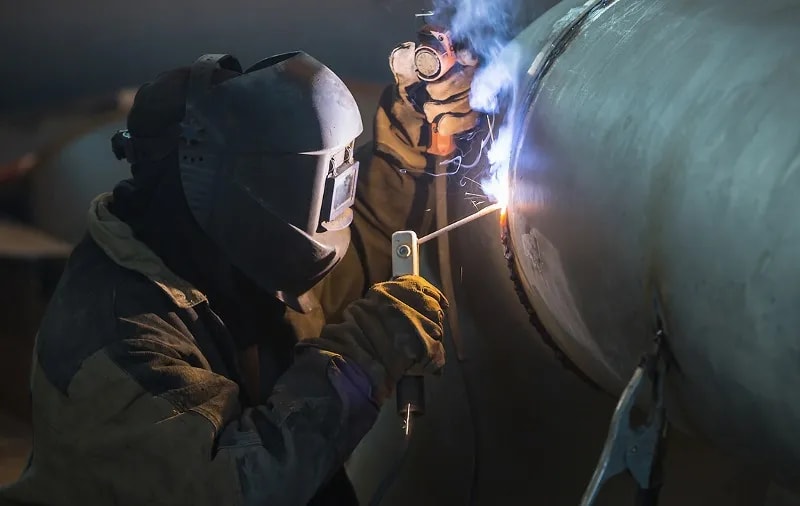Usual Welding Fixing Issues and How to Address Them Effectively
Welding repairs usually encounter a series of concerns that can endanger the honesty of the end product. Usual problems include insufficient infiltration, porosity, and imbalance, to name a few. Each defect offers one-of-a-kind obstacles that require certain approaches for resolution. Understanding these issues is important for welders aiming to enhance their abilities and outcomes. This conversation will certainly discover these usual welding fixing issues and efficient methods to address them.
Inadequate Infiltration
Poor infiltration occurs when the weld metal fails to fully fuse with the base product, resulting in weak joints and prospective structural failures. This issue often originates from inadequate warmth input, wrong electrode angle, or inappropriate welding speed. Welders might come across inadequate penetration due to a miscalculation of the essential criteria for a certain product density or type. Additionally, contamination on the base product's surface area can impede reliable bonding, exacerbating the trouble. To deal with insufficient infiltration, welders should ensure ideal setups on their devices and maintain a clean work surface. Routine assessment of welds is recommended to identify any kind of deficiencies early, permitting timely improvements and the avoidance of endangered architectural integrity in welded assemblies.
Porosity
Porosity is a typical issue in welded joints that manifests as little gas bubbles entraped within the weld metal. This issue can endanger the honesty of the weld, bring about decreased strength and possible failing under stress. Montana Mobile Welding and Repair Belgrade. Porosity typically occurs from contamination, moisture, or inappropriate welding techniques, which permit gases to run away right into the liquified weld swimming pool. To address porosity, welders must guarantee appropriate surface area preparation, keep a clean functioning setting, and utilize ideal welding specifications. Additionally, picking the right filler material and securing gas can reduce gas entrapment. Normal examination and screening of welds can aid determine porosity early, guaranteeing prompt rehabilitative activities are taken, consequently maintaining the quality and dependability of the bonded structure
Misalignment
Imbalance in welding can emerge from various elements, including incorrect setup and thermal growth. Comprehending the source is vital for reliable resolution. Numerous correction strategies are readily available to realign parts and ensure architectural honesty.
Causes of Misalignment
Welding misalignment often stems from a selection of underlying concerns that can jeopardize structural integrity. One primary cause is incorrect fit-up of parts before welding, which can cause voids and irregular surfaces. Variants in thermal development during the welding process can additionally lead to distortion, particularly if the materials being signed up with have various coefficients of growth. Furthermore, insufficient clamping and fixturing might fail to hold elements securely in area, leading to activity during welding. Poorly maintained equipment, including welding machines and devices, may introduce disparities in the weld bead, more adding to imbalance. Ultimately, operator mistake, originating from inadequate training or experience, can likewise play a substantial role in developing misaligned welds.
Correction Strategies Available
Resolving misalignment effectively calls for a combination of restorative strategies tailored to the certain problems handy. One typical approach is making use of components or jigs to hold components in the proper position throughout welding, guaranteeing consistent placement. In addition, preheating the materials can help decrease distortion and improve fit-up. For substantial imbalance, mechanical adjustment strategies, such as utilizing hydraulic jacks or clamps, can be used to remedy the setting before welding. Post-weld warmth treatment may also be required to soothe stresses triggered by misalignment. Finally, careful evaluation and modification during the arrangement stage can prevent imbalance concerns from coming to be considerable troubles, advertising a smoother welding process and enhancing general structural integrity.
Distortion
Distortion is a typical difficulty in welding that can arise from numerous elements, consisting of uneven cooling and heating. Understanding the reasons of distortion is essential for carrying out efficient prevention methods. Resolving this issue not just boosts structural integrity but additionally enhances the total top quality of the weld.
Sources of Distortion
When subjected to the extreme warm of welding, materials typically undergo adjustments that can result in distortion. This sensation mainly occurs from thermal expansion and tightening during the welding process. As the weld location warms up, the product increases; upon air conditioning, it gets, which can develop internal stresses. Additionally, irregular heating across a workpiece why not try these out can intensify these stress and anxieties, leading to bending or flexing. The kind of material also plays a considerable duty; steels with varying thermal conductivity and coefficients of expansion might respond differently, resulting in unpredictable distortions. Inadequate joint style and inadequate fixturing can contribute to misalignment during welding, enhancing the likelihood of distortion. Understanding these reasons is necessary for efficient welding fixing and avoidance strategies.
Prevention Techniques
Reliable avoidance techniques for distortion throughout welding concentrate on regulating warm input and guaranteeing correct joint layout. Maintaining a constant warmth input aids to minimize thermal development and tightening, which can cause distortion. Utilizing strategies such as preheating the work surface can additionally minimize the temperature level slope, advertising consistent home heating. Additionally, selecting proper joint styles, such as T-joints or lap joints, can boost security and minimize tension concentrations. Implementing appropriate fixturing to safeguard the work surfaces in area better help in preserving placement during the welding procedure. Lastly, staggered welding sequences can distribute heat much more uniformly, stopping local distortion. By using these techniques, welders can considerably lower the likelihood of distortion and enhance the additional resources overall top quality of their welds.
Splitting
Cracking is an usual concern run into in welding repair work, frequently resulting from numerous variables such as improper air conditioning prices, material option, or poor joint prep work. The incident of splits can greatly compromise the integrity of the weld, leading to possible failings during operation. To address this concern, welders should initially examine the origin, ensuring that products work and appropriately picked for the certain application. In addition, managing the air conditioning rate during the welding procedure is essential; quick cooling can cause tension and bring about fracturing. Appropriate joint layout and preparation also add to lessening the danger. Implementing these techniques can enhance weld high quality and longevity, inevitably minimizing the chance of splitting in ended up weldments.

Insufficient Blend
A significant concern in welding fixings is incomplete blend, which takes place when the weld steel does not effectively bond with the base product or previous weld passes - Montana Mobile Welding and Repair Belgrade Welding. This defect can cause weaknesses in the joint, possibly compromising the integrity of the bonded framework. Elements adding to insufficient fusion consist of inadequate heat input, inappropriate welding method, and contamination of the surface areas being joined. see page To resolve this concern properly, welders ought to ensure proper pre-weld cleaning and surface area prep work, as well as adjust their welding criteria to achieve adequate infiltration and combination. Normal assessment during the welding process can likewise aid recognize incomplete fusion early, permitting for timely restorative measures to improve the general top quality of the weld
Overheating
While welding repair work can improve architectural honesty, overheating offers a substantial obstacle that can cause product destruction. Extreme warm throughout welding can alter the mechanical residential or commercial properties of steels, leading to reduced stamina, boosted brittleness, and warping. This sensation is especially crucial in high-stress applications where architectural integrity is paramount. Identifying overheating can entail visual evaluations for staining or distortion, as well as keeping an eye on temperature level during the welding process. To alleviate the risks linked with overheating, welders must utilize proper methods, such as controlling warmth input, adjusting traveling speed, and using appropriate filler materials. Furthermore, carrying out pre- and post-weld warmth treatments can assist bring back product homes and improve the total top quality of the repair service, making certain long-lasting efficiency and security.
Often Asked Inquiries
What Are the Common Indications of a Welding Defect?

How Can I Evaluate My Welds for High quality?
To evaluate welds for top quality, one can utilize aesthetic examinations, ultrasonic screening, and radiographic approaches. Each technique guarantees structural stability, identifies defects, and verifies adherence to defined requirements, eventually enhancing the reliability of the bonded joints.
What Security Precautions Should I Take While Welding?
When welding, one ought to prioritize security by using ideal individual safety devices, making certain correct ventilation, protecting flammable materials away, keeping a clean work space, and being mindful of environments to stop injuries and accidents.
Can I Repair a Weld Without Renovating the Entire Joint?
Repairing a weld without redoing the whole joint is possible, relying on the damage (Belgrade). Strategies such as grinding, adding filler product, or utilizing a welding process can properly address details problems while protecting the surrounding framework
What Devices Are Crucial for Efficient Welding Services?
Necessary devices for effective welding repairs include a welding device, cord brush, mill, protective equipment, clamps, and filler products. Each tool plays a vital function in ensuring high quality and safety and security during the repair service procedure. Porosity usually arises from contamination, dampness, or incorrect welding techniques, which enable gases to leave into the liquified weld pool. Badly kept devices, consisting of welding makers and tools, may introduce variances in the weld bead, further contributing to imbalance. When subjected to the intense warm of welding, products commonly undertake adjustments that can lead to distortion. Fracturing is a common concern come across in welding repairs, usually resulting from various elements such as improper cooling rates, product option, or insufficient joint prep work. A significant issue in welding repair services is insufficient fusion, which happens when the weld metal does not appropriately bond with the base material or previous weld passes.